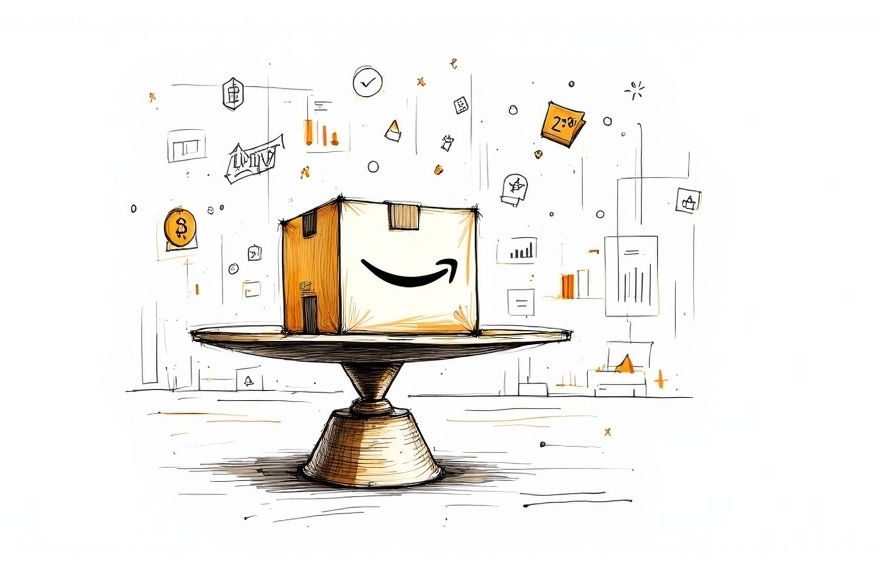Breaking Down the Amazon Fee Landscape
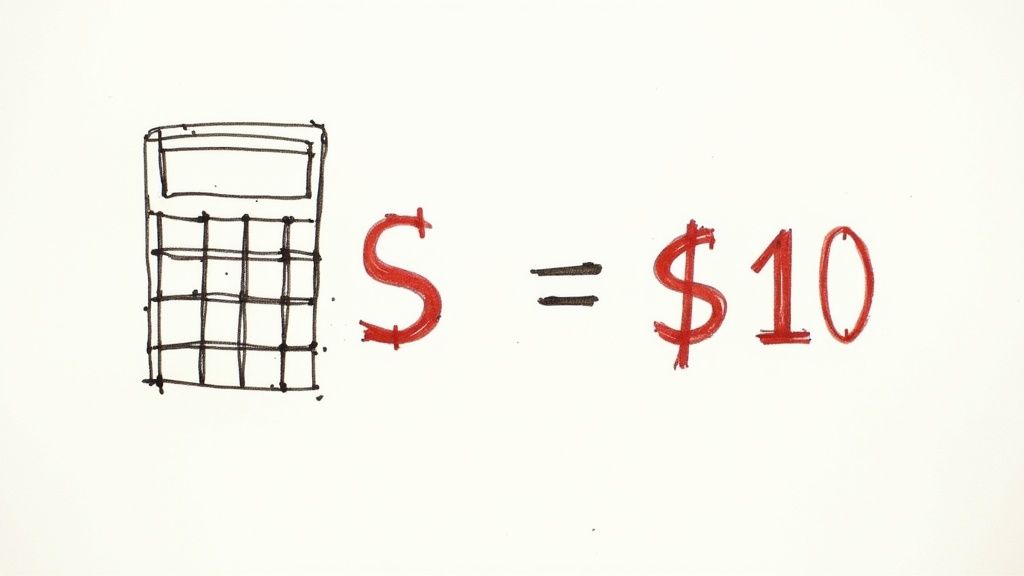
Getting your Amazon seller fees right makes the difference between profit and loss. The fees keep changing – just look at how much Fulfillment by Amazon (FBA) fees have gone up recently. Getting an accurate handle on these costs has never been more critical for sellers.
Understanding the Core Components of Amazon Fees
When you sell on Amazon, several key fees affect your bottom line. The most basic is the referral fee – a percentage Amazon takes from each sale, usually between 8% and 15% based on what you’re selling. If you use FBA, you’ll also pay fulfillment fees that cover Amazon handling your products. These fees change based on how big and heavy your items are.
Storage space at Amazon’s warehouses comes with its costs too. You pay based on how much room your products take up, with extra fees kicking in if items sit there for over a year. To keep these fees in check, you need to know how quickly your inventory moves and plan your storage needs carefully.
Navigating Recent Fee Changes and Their Impact
Amazon’s fees don’t stay the same for long. In the past few years, FBA fees alone have jumped more than 30% since 2020. This isn’t just random – rising fuel costs and inflation have pushed fees higher through various increases and extra charges. As a seller, you have to stay on top of these changes to protect your profits.
The Significance of Fee Calculation for Profitability
Getting your fee calculations wrong can seriously hurt your business. If you miss some fees when planning your costs, you might think you’re making more money than you are. But when you know exactly what you’ll pay, you can set prices that make you money while staying competitive. This matters most for low-priced items, where fees can eat up a bigger chunk of your sale price. These days, total Amazon fees often reach 35% or more of what customers pay. That’s why understanding and tracking these fees isn’t just helpful – it’s essential for running a successful Amazon business.
Mastering the Essential Fee Calculation Tools
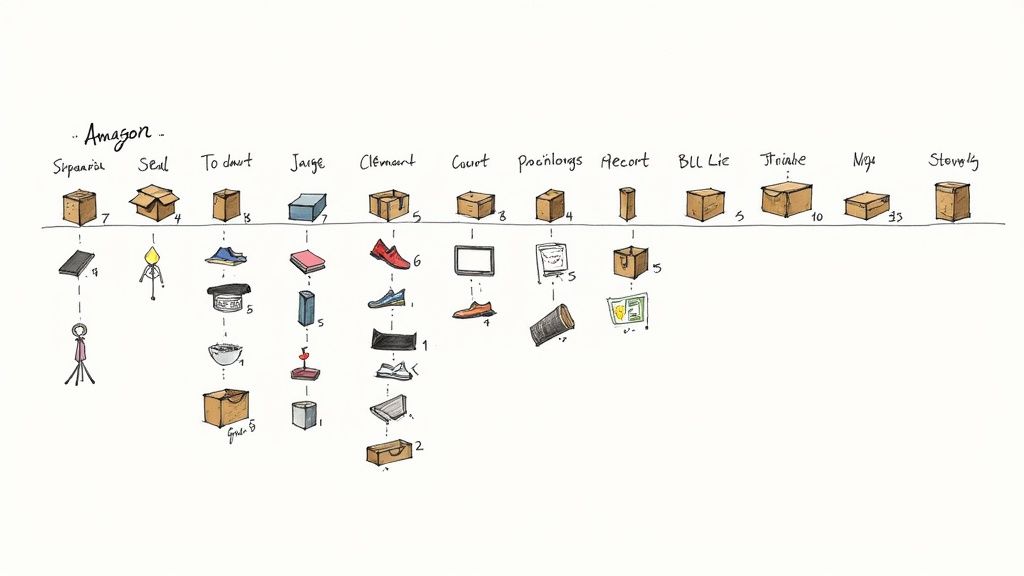
Understanding how to accurately calculate Amazon seller fees is essential for running a profitable business. While knowing the fee structure is important, using the right calculation tools makes the real difference. With proper tools and techniques, you can make smart decisions based on real data and avoid unexpected costs that could hurt your bottom line.
Utilizing the Amazon FBA Revenue Calculator
The Amazon FBA Revenue Calculator helps you estimate potential profits before listing products. Simply enter key details like product dimensions, weight, category, and planned selling price. For example, when listing a coffee mug, you’d input its measurements, select the “Home & Kitchen” category, and set your target price. The calculator then shows a clear breakdown of all fees – from referral fees to fulfillment and storage costs. This detailed view helps you set prices that are both competitive and profitable.
Exploring the FBA Calculator Within Seller Central
The FBA Calculator in Seller Central offers another valuable perspective by comparing self-fulfillment versus FBA costs. You can enter your current shipping expenses and handling times to see how they compare to Amazon’s fulfillment services. This side-by-side view of profit margins for each method helps you choose the best fulfillment strategy for your business model and goals.
Practical Scenarios and Common Pitfalls
While these calculators are helpful, watch out for common mistakes that can throw off your estimates. Many sellers forget to include all their costs – like shipping inventory to Amazon’s warehouses, advertising budgets, and potential long-term storage fees. For seasonal items especially, storage costs can add up if products don’t sell quickly. Keep in mind that FBA fees have risen over 30% since 2020, so staying current with Amazon’s fee updates is crucial for accurate planning.
Pro Tips for Accurate Profit Projections
To get the most reliable profit estimates, follow these proven strategies: Research “Calculate Amazon seller fees” online to find current resources and guides. Don’t just rely on calculator results – study your market to understand competitive pricing and what customers expect to pay. Always add a buffer for unexpected expenses like fee increases or higher return rates than planned. By following these practical tips and avoiding common mistakes, you’ll be better equipped to calculate your fees accurately and build a successful Amazon business.
Crafting Smart Pricing Strategies Across Categories
Once you master calculating Amazon seller fees, the next step is using that knowledge to build effective pricing strategies that work for your specific product categories and target market. Getting this right is key to maintaining healthy profits, especially as costs on Amazon continue to rise.
Pricing for Profit: Budget Versus Premium Products
Budget and premium products each need their unique pricing approach. For lower-priced items where small changes can significantly impact margins, precise fee calculations are essential. Take a $10 item – a mere 50-cent increase in fees takes a 5% bite out of your profit. This is why it’s critical to understand exactly how referral fees, fulfillment costs, and storage expenses affect your bottom line. To stay profitable, sellers of budget items often need to adjust prices more frequently as fees change.
Premium products offer more breathing room. When customers buy high-end items, they tend to focus more on quality and features than small price differences. This means you can more easily absorb fee increases without hurting sales. For these products, building a strong brand and communicating value can matter just as much as precise fee management.
Competitive Pricing Analysis and Market Research
To set the right prices, you need to know your competition inside and out. Let’s say you’re selling phone cases. Your fee calculations might suggest a $15 price tag, but if similar cases are going for $12, you’ll need to rethink your strategy. Good market research shows what buyers will pay and how your product compares to others. This helps you find that sweet spot where you’re both profitable and competitive. For example, if your phone case has unique feature customers love, you might be able to charge a bit more than competitors.
Practical Techniques for Pricing Optimization
More sellers are using dynamic pricing – adjusting prices based on real-time market conditions. It’s similar to how rideshare prices go up during peak times. You can raise prices slightly during high-demand seasons and lower them when things slow down. This helps maximize profits during busy periods while staying competitive year-round. Strategic promotions like coupons and discounts can also boost sales volumes, especially for budget items. Just be sure to factor in fees when planning promotions so they improve your bottom line.
Real-World Examples of Successful Pricing Adjustments
Smart sellers have found ways to handle Amazon’s rising fees. Some avoid shocking customers by making small, gradual price increases rather than one big jump. They also improve their product listings and customer service to help justify slightly higher prices. Others explore different fulfillment options or make their operations more efficient to offset higher FBA costs. These real examples show that success comes from really understanding your costs and being proactive with your strategy. By carefully managing fees, studying the market, and adjusting prices strategically, you can build a business that thrives on Amazon.
Smart Inventory Management for Fee Reduction
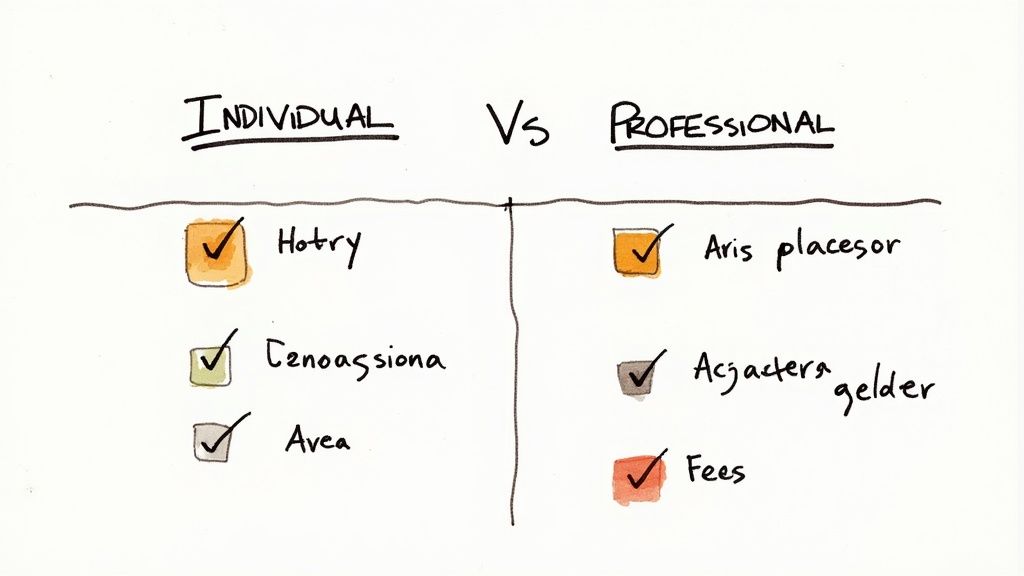
Understanding your Amazon seller fees is just the first step. To truly minimize costs and boost profits, you need an effective strategy for managing inventory, especially when it comes to storage fees that can quickly eat into your margins. Let’s look at practical ways to optimize your inventory management and reduce unnecessary expenses.
Optimizing Product Dimensions and Packaging
The physical attributes of your products directly influence your FBA costs. A simple principle applies here: the larger and heavier your items, the more you’ll pay in fees. For instance, shipping and storing a winter coat cost substantially more than handling a t-shirt. The good news is that small changes can make a big difference – like redesigning product packaging to be more compact or choosing lighter materials. Consider a real example: by switching from a spacious display box to a slim protective case for headphones, you could cut storage costs significantly across your entire inventory.
Strategic Storage Solutions for Cost Savings
Your approach to storing products at Amazon’s fulfillment centers makes a measurable impact on your bottom line. Since storage fees are calculated based on the space your inventory occupies, smart organization becomes crucial. Take advantage of Amazon’s various storage options – standard storage works well for fast-moving items, while long-term storage programs might be more cost-effective for seasonal products or slower sellers. The key is matching the right storage solution to each product’s sales cycle.
Inventory Turnover and Demand Forecasting
Managing inventory isn’t just about physical storage – it requires understanding your sales patterns and anticipating future demand. By analyzing your sales history, you can maintain optimal stock levels that prevent both costly stockouts and expensive excess inventory. For example, there’s no benefit in storing large quantities of swimwear during winter months when sales are naturally lower. This is where tools for tracking Amazon seller fees prove especially valuable, helping you spot seasonal trends and make informed decisions about inventory levels.
Real-World Examples of Inventory Management Success
Look at how top Amazon sellers handle their inventory: many use just-in-time strategies, sending products to fulfillment centers only when needed based on sales forecasts. Others rely on data-tracking software to monitor sales patterns and adjust stock levels accordingly. These approaches show how thoughtful inventory management can shift from being a cost burden to becoming a source of competitive advantage. With careful planning and the right tools, you can build an inventory system that supports rather than drains your profitability on Amazon.
Navigating Peak Seasons and Special Fee Periods
Understanding how to manage Amazon seller fees becomes particularly important during peak seasons like Christmas and Prime Day. These high-traffic periods offer great sales potential but come with unique cost considerations that can impact your bottom line.
Preparing for Increased Fulfillment Fees and Seasonal Surcharges
The reality of peak seasons is that costs go up. During busy periods, Amazon adds temporary increases called peak fulfillment fees. In 2022, for instance, they added 31 cents to standard fulfillment fees during the holiday rush. The company also introduced a permanent 5% fuel and inflation surcharge that year. This means you can’t rely solely on basic fee calculators – you need to factor in these temporary and permanent increases to get an accurate picture of your actual costs and maintain healthy margins.
Strategic Inventory Planning for Peak Demand
Getting inventory levels right during peak seasons requires careful planning. Too much stock means paying higher storage fees, which often increase during busy periods. Too little means missing sales opportunities. Finding the sweet spot requires analyzing your sales history and making informed predictions about future demand. For example, storing winter coats in summer racks up unnecessary storage costs, so timing your inventory buildup is crucial. Success comes from studying your past performance data and using it to optimize stock levels.
Pricing Adjustments to Maximize Profitability
Peak seasons let you potentially raise prices due to high demand, but you still face plenty of competition. The key is understanding your total costs – including those seasonal fee increases – so you can adjust prices strategically. Rather than making one big price jump that might scare away customers, consider smaller incremental increases to offset rising fees while staying competitive. It’s also smart to monitor how other sellers in your category handle their peak season pricing.
Real-World Examples and Pitfalls to Avoid
Many successful sellers use flexible pricing during peak periods, similar to how ride-sharing services adjust rates based on demand. This helps maximize revenue during busy times while maintaining sales during slower periods. However, watch out for common mistakes like failing to lower prices again after peak season ends – this often leads to declining sales as demand returns to normal. The best approach is studying what worked and what didn’t during past peak periods so you can keep improving your strategy. By mastering these seasonal dynamics, you’ll be better equipped to handle the challenges and opportunities that come with Amazon’s busiest selling times.
Advanced Optimization Techniques That Drive Results
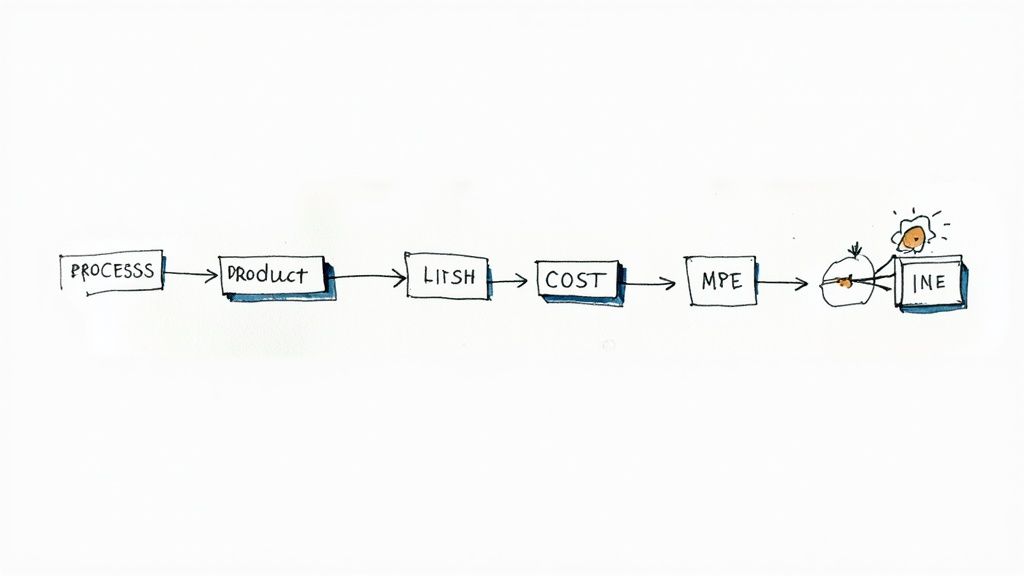
Understanding how to calculate Amazon seller fees is essential, but growing a profitable business requires looking at the bigger picture. Smart sellers go beyond basic fee calculations to examine how their entire business model works with Amazon’s fee structure. Let’s explore some proven techniques that successful sellers use to reduce costs and boost their bottom line.
Multi-Channel Fulfillment: Expanding Your Reach While Managing Fees
One effective approach is using Multi-Channel Fulfillment (MCF) to handle orders from multiple sales channels. With MCF, you can use Amazon’s fulfillment network to ship products ordered through your website or other marketplaces. This creates a consistent shipping experience for all your customers, which often leads to better reviews and repeat purchases. By consolidating your shipping through Amazon, you may also save money compared to juggling multiple shipping solutions. Just keep in mind that MCF fees work differently than standard FBA fees – careful planning is needed to maintain healthy margins.
Product Bundling: A Creative Approach to Fee Optimization
Product bundling offers another smart way to optimize your fees. By packaging related items together as one unit, you can boost average order value while paying lower fees. For example, selling a phone case with a screen protector as a bundle means paying just one FBA fee instead of two separate ones. This works especially well with small, lightweight items that would otherwise have high per-unit fees. Plus, customers often see bundles as a better value, making your offerings more appealing.
Alternative Fulfillment Methods: Exploring Beyond FBA
While Amazon FBA is convenient, rising fees mean it’s worth considering other options. Seller-Fulfilled Prime (SFP) lets you maintain Prime status while handling shipping yourself – this can save money, especially for large or heavy items with steep FBA fees. However, SFP requires meeting Amazon’s strict performance standards. Another option is working with a third-party logistics company (3PL), which can provide more flexibility and potentially lower costs for complex fulfillment needs.
Real-World Success Metrics and Implementation
To make these strategies work, you need solid data. Track important numbers like your cost per unit shipped, average order value, and what you spend to acquire customers. If you try product bundling, check if your average order value increases. When using SFP, monitor your on-time delivery rate and customer feedback to ensure you’re meeting Amazon’s requirements. Regular analysis helps identify what’s working and what needs adjustment. You might find certain product bundles perform better than others, allowing you to fine-tune your approach. Keep testing and refining your strategies based on real results.
Managing Amazon’s fees effectively requires staying alert and adjusting your approach as needed. To help track and recover potential overcharges in your FBA account, consider using Refunzo. Their free service helps spot possible refunds, giving you better control over your finances while you focus on growing your business.

